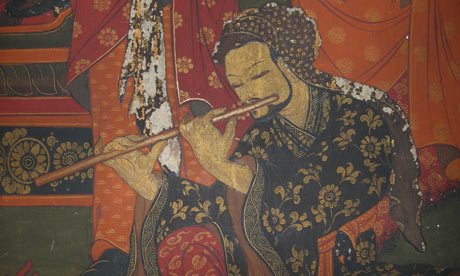The country knows it needs to develop, but it’s making sure the development doesn’t come at the expense of its natural resources.

Photo: Flickr user sprklg
That’s the first thing that Tshering Tobgay, the charismatic prime minister of the tiny Himalayan nation of Bhutan, wants you to know about his homeland.
People are forgiven for thinking otherwise. For its beautiful forests and mountains and ancient Buddhist architecture, Bhutan—a poor, isolated country sandwiched between India and China that famously measures Gross National Happiness as its main economic indicator—has been called the last Shangri-la. But the prime minister knows that perception works against Bhutan’s efforts to develop economically along a truly sustainable path that has eluded many other equally beautiful nations. In Bhutan, many people still live in poverty, youth unemployment is rising, and pressures on forests are increasing. Its total GDP, $2 billion, is half that of Springfield, Ohio. Continue reading How The Tiny, Poor Country Of Bhutan Became One Of The Most Sustainable Countries On Earth







 16 November, 2009 – Sponsors, who are in the country, express happiness with progress on project. Consecration of the 169-foot bronze statue of Buddha Dordenma, Vajra Throne Buddha, being constructed at Kuensel Phodrang in Changbangdu, overlooking the capital city, Thimphu will be completed by October next year, said one of the main sponsors, Wong Kiam Seng. Wong Kiam Seng, who is in the country, along with other sponsors from Hongkong and Singapore, said, “We’re funding it because of our compassion for Buddhism,” adding that they are happy with the progress of the project. Over USD 30 million has been spent on the project so far, said Wong.
16 November, 2009 – Sponsors, who are in the country, express happiness with progress on project. Consecration of the 169-foot bronze statue of Buddha Dordenma, Vajra Throne Buddha, being constructed at Kuensel Phodrang in Changbangdu, overlooking the capital city, Thimphu will be completed by October next year, said one of the main sponsors, Wong Kiam Seng. Wong Kiam Seng, who is in the country, along with other sponsors from Hongkong and Singapore, said, “We’re funding it because of our compassion for Buddhism,” adding that they are happy with the progress of the project. Over USD 30 million has been spent on the project so far, said Wong.